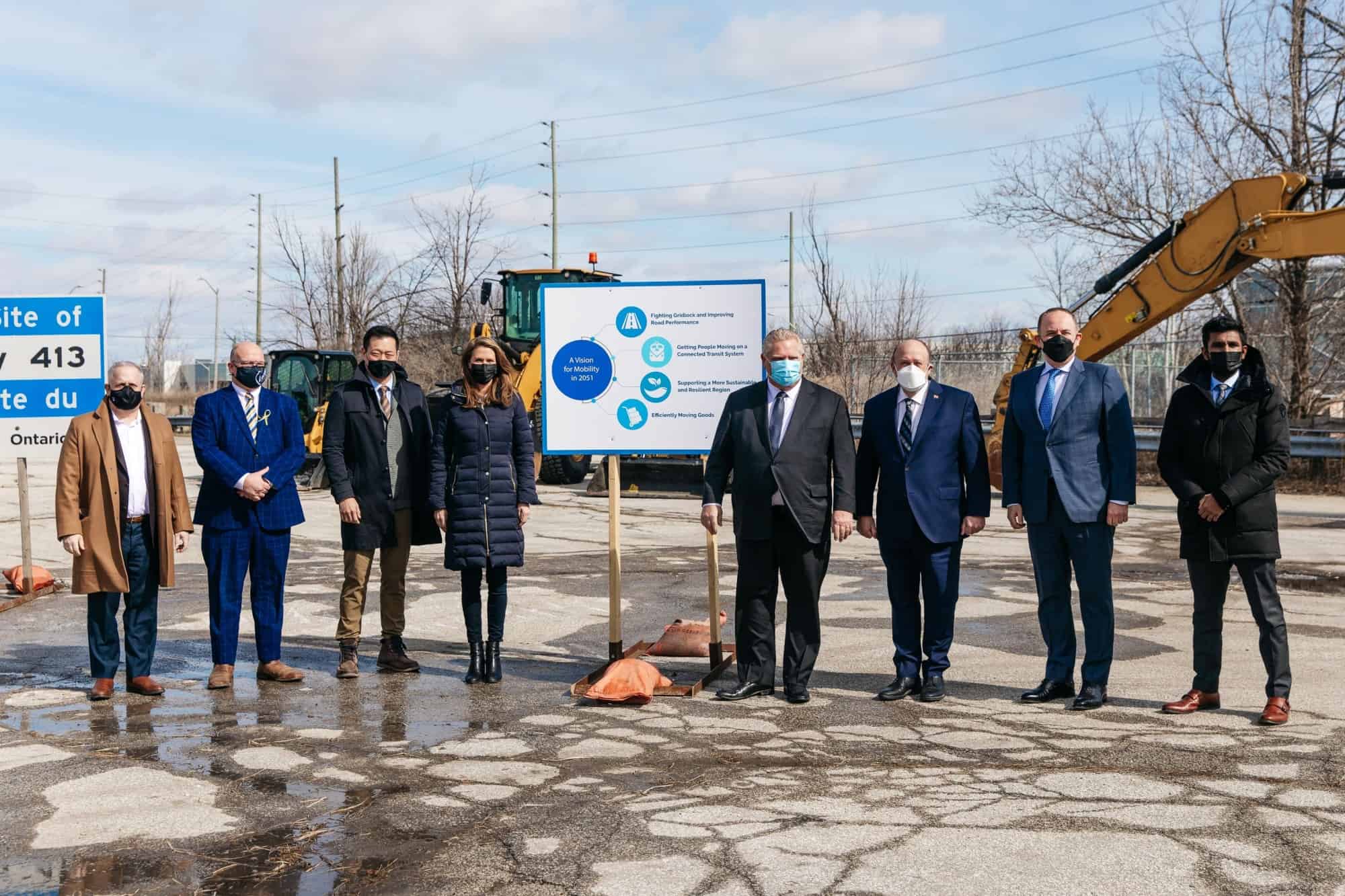$82 billion in transit spending and an Oshawa-Burlington LRT line highlight of Ford’s 2051 transit plan
Published March 11, 2022 at 2:39 pm

In a month filled with transportation announcements the Provincial government unveiled perhaps the juiciest today, at least from Durham Region’s point of view: a 30-year transit plan that will include $82 billion in spending over the next decade and feature a conceptional east-west LRT line between Burlington and Oshawa.
The LRT line will cut across the top of Toronto along already protected lands for the 407 Transitway, a bus rapid transit corridor running parallel to Highway 407.
According to a release from Queen’s Park, the transit line will connect existing and planned GO Transit, LRTs and subways between Halton and Durham Region and “transform” the regional transit system from today’s radial commuter network centred on Union Station to an expansive grid, “so people can get to where they need to go without going through the downtown core.”
“We’re not just building for today, we’re building for the next 50 to 100 years,” said Premier Doug Ford at a press conference in Woodbridge to unveil the 2051 Plan. “We owe it to our kids and our grandkids to make decisions now that will benefit them for years to come.
The LRT will run along the 407 Transit corridor to Locust Hill (near the border of Markham and north Pickering) before cutting south and west and making its way to Burlington.

The long-term transit project, dubbed Connecting the GGH: A Transportation Plan for the Greater Golden Horseshoe, also plans to connect the Ontario Line to Pearson airport and boasts a number of ambitious public transit expansions, including the new Eglinton Crosstown, Hurontario, Hamilton and Finch West LRT lines. It also includes extension to the Yonge subway line and the Scarborough LRT.
The province says they will also expand the GO rail network to include frequent two-way trips and 15-minute service all day long.
“It will give people more options to get around,” Ford said at the announcement. “A province growing as fast as ours needs an infrastructure to support it.”
Other parts of the plan include expanding the highway network in the region by building the controversial Highway 413 and Bradford Bypass and a number of highway widening initiatives, including the stretch of Highway 401 between Brock Road in Pickering to Highway 35/115.
The project aims to “better connect” the heavily populated Greater Golden Horseshoe region in Southern Ontario and the province says it “will support population and employment growth, reduce gridlock and connect communities.”
“Our government is building roads, highways and transit to connect communities, fight gridlock and keep goods and people moving across the province, including in Ontario’s economic engine, the Greater Golden Horseshoe,” said Caroline Mulroney, Minister of Transportation. “No matter how you choose to move, we are building all forms of transportation infrastructure to help you get to where you need to go more safely, quickly, and conveniently.”






